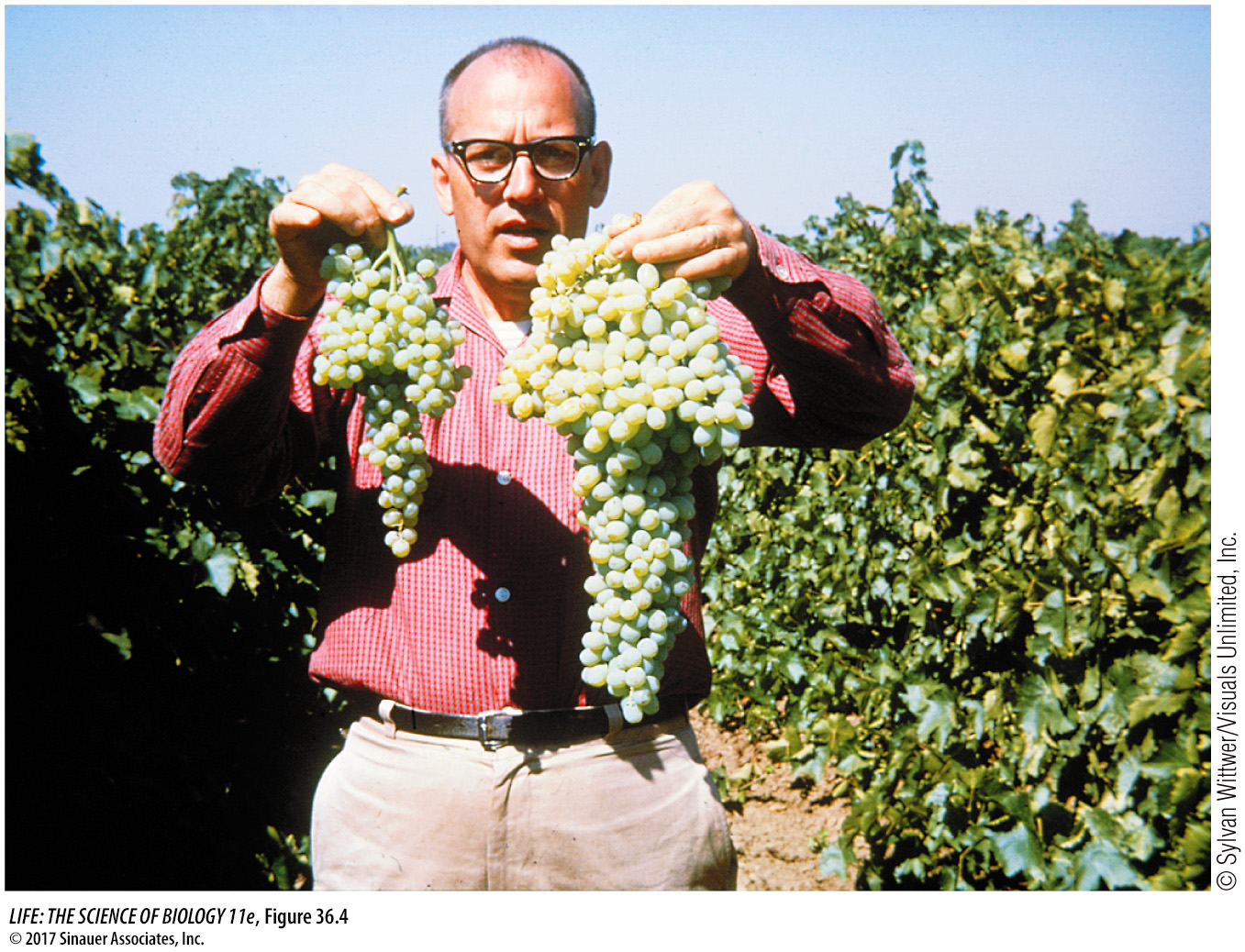Gibberellins have many effects on plant growth and development
The functions of gibberellins can be inferred from the effects of experimentally decreasing gibberellins or blocking their action at various points in plant development. Such experiments reveal that gibberellins have multiple roles in regulating plant growth.
STEM ELONGATION The effects of gibberellins on wild-
FRUIT GROWTH Gibberellins and other hormones regulate the growth of fruits. Grapevines that produce seedless grapes develop smaller fruits than varieties that produce seed-

MOBILIZATION OF SEED RESERVES Early in seed germination, hydrolytic enzymes are produced to break down stored reserves of starch, proteins, and lipids. Just after imbibition in germinating seeds of barley and other cereals, the embryo secretes gibberellins. The hormones diffuse through the endosperm to a surrounding tissue called the aleurone layer, which lies underneath the seed coat. The gibberellins trigger a cascade of events in the aleurone layer, causing it to synthesize and secrete enzymes that hydrolyze proteins and starch stored in the endosperm (Figure 36.5). These observations have practical importance: in the beer brewing industry, gibberellins are used to enhance the “malting” (germination) of barley and the breakdown of its endosperm, producing sugar that is fermented to alcohol.

Q: In brewing beer, stored starch in barley seeds is converted to maltose. How do you think this is done in the brewery?
To stimulate the breakdown of starch, seeds are imbibed in water and mashed up.
Activity 36.3 Events of Seed Germination
Another hormone, abscisic acid (ABA) (see Table 36.2) plays an antagonistic role with gibberellins in seed dormancy and germination. As we will describe in Key Concept 37.1, ABA levels are high in dormant seeds and fall off during germination. Thus ABA plays a role in maintaining seed dormancy, whereas gibberellins function to break dormancy and promote germination.